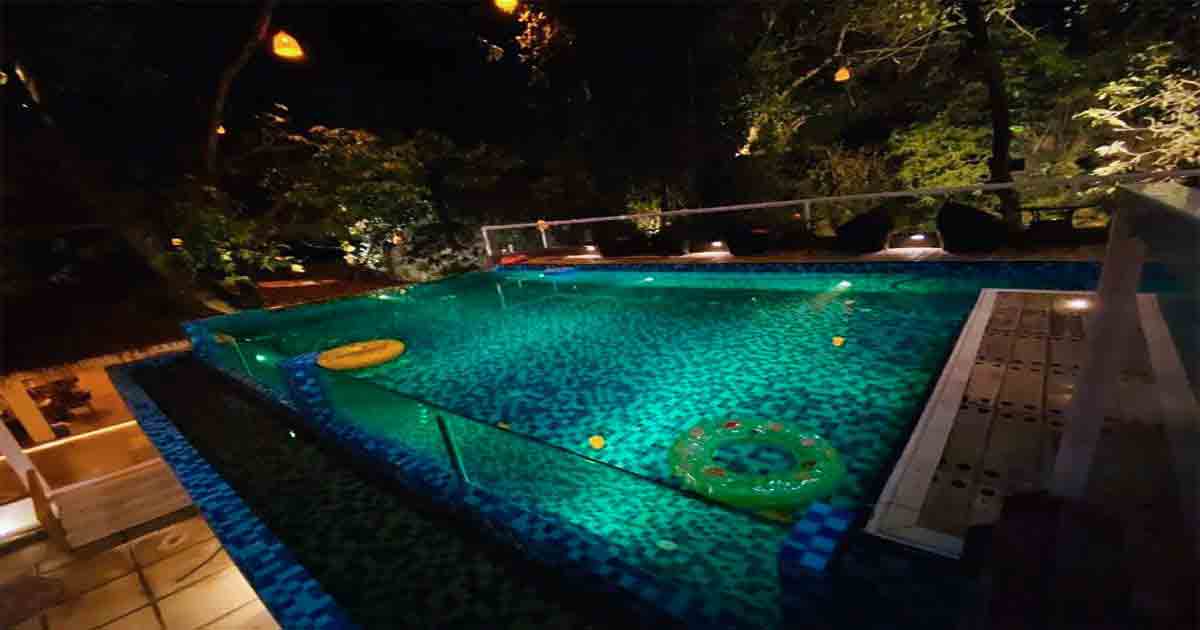Rooftop swimming pool construction details
Constructing a rooftop swimming pool involves a blend of architectural vision, engineering prowess, and meticulous planning to ensure safety, functionality, and aesthetic appeal. This endeavor begins with a comprehensive understanding of structural requirements, waterproofing techniques, and design considerations tailored to the unique challenges and opportunities presented by rooftop installations.
Structural Considerations
The structural integrity of the building must be thoroughly assessed before undertaking rooftop swimming pool construction. Structural engineers evaluate load-bearing capacities to determine if the existing structure can support the additional weight of a pool filled with water, which can range from hundreds to thousands of kilograms per square meter depending on its size and depth.
Reinforcement measures such as steel beams, columns, or additional foundations may be necessary to distribute the weight evenly and prevent structural compromise. This assessment is critical to ensure the safety of the building’s occupants and longevity of the pool.
Waterproofing Techniques (Rooftop swimming pool construction details)
Effective waterproofing is essential to prevent leakage and water damage to the building structure below. Various waterproofing methods exist, including:
- Membrane Systems: Flexible membranes made from materials such as PVC or EPDM (ethylene propylene diene terpolymer) are applied to create a seamless barrier against water penetration.
- Liquid Applied Coatings: Polymer-based coatings are spread over the pool surface and cured to form a durable, waterproof layer.
- Integral Waterproofing: Concrete structures can be treated with additives during mixing to enhance their impermeability.
Each method has its advantages and is selected based on factors such as climate, budget, and design preferences. Regular maintenance and inspections are crucial to identify and repair any potential leaks promptly.
Design and Aesthetic Integration (Rooftop swimming pool construction details)
The design of a rooftop swimming pool should harmonize with the architectural style of the building and complement its surroundings. Key design elements include:
- Pool Shape and Size: Rectangular, oval, or custom shapes can be tailored to maximize space and visual appeal.
- Edge Detailing: Infinity edges or glass walls can create dramatic visual effects while offering unobstructed views.
- Decking and Landscaping: Non-slip decking materials and greenery enhance safety and ambiance.
- Lighting: LED lights can transform the pool area at night, creating a luxurious atmosphere.
Accessibility for maintenance and emergency access routes must also be considered during the design phase to ensure practicality and compliance with safety regulations.
Mechanical and Electrical Systems (Rooftop swimming pool construction details)
The pool’s mechanical and electrical systems are critical for its operation and maintenance:
- Filtration and Circulation: Pumps and filters ensure water quality by circulating and cleaning the pool water.
- Heating and Cooling: HVAC systems may be required to maintain comfortable water temperatures year-round.
- Lighting and Automation: Automated controls can manage lighting, temperature, and water features efficiently.
Integration of these systems requires careful planning to minimize energy consumption and operational costs while maximizing user convenience.
Safety and Regulatory Compliance (Rooftop swimming pool construction details)
Adherence to local building codes and safety standards is paramount when constructing a rooftop swimming pool. Requirements typically cover structural stability, barrier heights, emergency exits, and accessibility for people with disabilities. Regular inspections and certifications are necessary to ensure ongoing compliance and safety.
Environmental Considerations (Rooftop swimming pool construction details)
Rooftop pools present opportunities for environmental sustainability through:
- Water Conservation: Use of efficient filtration systems and covers to minimize evaporation.
- Energy Efficiency: Solar heating and LED lighting reduce energy consumption.
- Green Roof Integration: Incorporating vegetation on nearby rooftop areas can enhance aesthetics and promote biodiversity.
These eco-friendly practices align with contemporary architectural trends favoring sustainable design solutions.
Maintenance and Lifespan (Rooftop swimming pool construction details)
Regular maintenance is crucial to preserve the pool’s functionality and appearance. Tasks include:
- Cleaning: Skimming, vacuuming, and chemical balancing.
- Inspections: Structural integrity, waterproofing, and mechanical systems.
- Repairs: Prompt addressing of leaks, cracks, or equipment malfunctions.
A well-maintained rooftop pool can provide decades of enjoyment and add significant value to the property.
Rooftop swimming pool construction requires careful planning and execution to ensure safety, durability, and aesthetic appeal. Building a pool on a rooftop offers a unique urban experience, providing stunning views and a luxurious atmosphere. Here are key considerations and steps involved in the construction process.
Structural Assessment (Rooftop swimming pool construction details)
Before construction begins, a thorough structural assessment of the building is essential. The rooftop must be evaluated for weight-bearing capacity to support the pool, water, and surrounding features. Engineers often conduct load calculations to ensure that the existing structure can handle the additional weight.
Design and Planning (Rooftop swimming pool construction details)
The design phase involves creating a layout that complements the building’s architecture and maximizes views. Common design features include infinity edges, glass walls, and integrated seating areas. It’s crucial to consider factors like access points, safety barriers, and drainage systems to ensure functionality and safety.
Waterproofing and Insulation (Rooftop swimming pool construction details)
A critical aspect of rooftop pool construction is effective waterproofing. High-quality waterproofing membranes are installed to prevent leaks that could damage the building below. Insulation may also be added to help regulate water temperature and reduce energy costs.
Pool Construction (Rooftop swimming pool construction details)
The construction of the pool itself can utilize various materials, such as concrete, fiberglass, or tiles. Concrete pools are popular for their versatility and durability, while fiberglass pools offer quicker installation times. The choice of materials should align with the desired aesthetic and functional requirements.
Filtration and Heating Systems
Integrating an efficient filtration and heating system is essential for maintaining water quality. Rooftop pools often require specialized equipment due to limited space. Compact, energy-efficient systems ensure clean, warm water while minimizing noise and energy consumption.
Safety Measures
Safety is paramount in rooftop pool construction. Installing sturdy railings, non-slip surfaces, and proper drainage systems helps prevent accidents. Compliance with local building codes and safety regulations is crucial for ensuring the safety of pool users.
Finishing Touches
Finally, landscaping, lighting, and deck features enhance the overall ambiance. Adding lounge areas, planters, and lighting can create a relaxing oasis above the city, turning a rooftop pool into a desirable leisure space.
In conclusion, rooftop swimming pool construction requires meticulous planning and execution, considering structural integrity, design, waterproofing, and safety measures. With the right approach, it can transform any rooftop into a luxurious retreat.
Rooftop swimming pools are popular for their luxurious appeal, especially in urban areas with limited ground space. Creating a rooftop pool, however, involves complex engineering, specialized materials, and meticulous planning to ensure both functionality and safety. Here’s an in-depth look at the essential construction details involved in building a rooftop swimming pool.
1. Structural Assessment and Load Capacity
One of the first steps in rooftop pool construction is assessing the building’s structural integrity. A rooftop pool adds significant weight, and existing structures may not be designed to support such loads. Engineers analyze the building’s load-bearing capacity, including both dead load (the weight of the pool itself, water, and deck) and live load (weight of people and movement around the pool).
The foundation may require reinforcement, often using steel beams, concrete columns, or support pillars to handle the added load. This assessment ensures the structure can safely accommodate the pool without compromising the building’s integrity.
2. Waterproofing and Drainage Systems
Waterproofing is a critical aspect, as water leakage can lead to severe damage to the structure below the pool. High-quality waterproofing membranes are applied in multiple layers beneath the pool to prevent seepage. Common materials include elastomeric coatings, flexible cementitious products, and epoxy coatings, which seal the pool structure and prevent water from penetrating the building.
Proper drainage is equally important. Overflowing or splashed water needs effective drainage channels around the pool deck to avoid puddling, which can cause slipping hazards and structural decay. The drainage system must be connected to the main building’s plumbing, ensuring excess water is directed away safely.
3. Design and Aesthetic Considerations
Rooftop pools are often constructed as infinity-edge pools, lap pools, or plunge pools, depending on available space and desired aesthetics. Infinity-edge pools are particularly popular for rooftop installations, as they create a seamless view, blending the pool with the surrounding skyline.
Deck materials should be chosen for durability and resistance to weather changes. Options include non-slip tiles, treated wood, or composite decking, each selected for its ability to withstand both pool chemicals and outdoor elements. Designers often integrate lounging areas, plants, and lighting to enhance the ambiance, transforming the rooftop into a resort-like retreat.
4. Insulation and Thermal Protection
Given the pool’s exposure to open air, rooftop pools need thermal protection to maintain a comfortable water temperature and minimize heat loss. Insulating layers are placed beneath the pool structure, commonly using materials like polystyrene or polyurethane foam, to reduce temperature fluctuations and prevent unnecessary heating costs.
Additionally, rooftop pools can incorporate solar panels or heating systems to regulate the water temperature. Heated pools are a popular choice, allowing users to enjoy the pool year-round, regardless of the outdoor climate.
5. Safety Measures and Access Control
Safety is paramount, especially in rooftop installations. Protective barriers like glass railings or guardrails are essential to prevent accidental falls. These barriers are designed to be unobtrusive, providing safety without obstructing the view.
Access control is another important feature, particularly for residential buildings or hotels. Restricted access can be ensured using keycards, biometric scanners, or secure gates. Adding an alarm or surveillance system increases security, preventing unauthorized use and ensuring peace of mind for property owners.
6. Pool Circulation and Filtration Systems
Efficient water circulation and filtration systems are vital to maintaining water quality in a rooftop pool. Due to space limitations, compact filtration systems, such as cartridge filters or sand filters, are often preferred over larger systems.
These systems are designed to fit in compact pump rooms, typically installed near the pool. Pool pumps ensure water flows properly through filters and return lines, maintaining clean and healthy water. Saltwater systems are also becoming popular in rooftop pools, as they reduce the reliance on chlorine and are less harsh on both the pool and users.
7. Maintenance Access and Utilities
Maintenance access is essential to ensure easy servicing of filtration systems, waterproofing layers, and other utilities. Rooftop pools typically have dedicated utility rooms nearby for storing equipment, chemical supplies, and maintenance tools.
Plumbing and electrical lines need to be carefully routed to avoid interfering with the building’s existing systems. An experienced contractor collaborates with plumbers and electricians to integrate these utilities seamlessly, ensuring the pool functions optimally.
8. Environmental Considerations and Permitting
Rooftop pools may need to adhere to environmental codes and building regulations, especially in densely populated areas. Local regulations often require permits to confirm the pool design complies with safety and environmental standards.
Sustainable design features can also be integrated, like rainwater harvesting systems or energy-efficient pumps, to reduce the pool’s environmental impact. Permitting may involve submitting architectural and structural plans, along with calculations confirming the pool’s compliance with load, drainage, and safety requirements.
9. Cost Implications
Rooftop pools are generally more expensive than ground-level pools due to the added engineering requirements, high-quality materials, and specialized labor. Costs vary depending on the complexity of the design, size of the pool, and level of customization. A thorough budget that includes not only construction but also ongoing maintenance helps ensure a successful, long-term investment.
10. Weather Considerations and Protection
Rooftop pools are exposed to varying weather conditions, including intense sunlight, heavy rain, and high winds. Protective measures, such as pool covers and retractable roofs, help shield the pool and deck during adverse weather. Pool covers reduce water evaporation and heat loss, while retractable roofs provide the flexibility to enjoy the pool in all weather conditions.
Conclusion (Rooftop swimming pool construction details)
Constructing a rooftop swimming pool demands meticulous planning and execution across various disciplines—from structural engineering and waterproofing to design aesthetics and environmental considerations. Each decision, from material selection to safety compliance, influences the pool’s performance and longevity. By integrating innovative design with sustainable practices and stringent safety measures, rooftop pools can enhance urban landscapes while offering residents a luxurious and functional aquatic retreat above the city skyline.


















